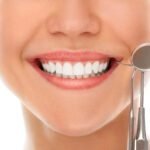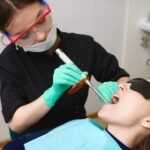Table of Contents
Understanding the Importance of Primary Teeth
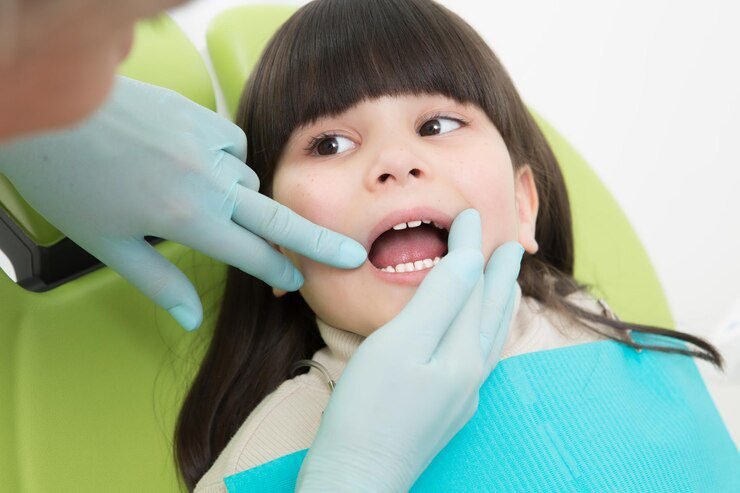
Primary teeth, also known as baby teeth or milk teeth, play a crucial role in a child’s oral health and overall development. While they may seem temporary, their significance should not be underestimated. These primary teeth serve as placeholders for the permanent teeth that will one day replace them, guiding them into their proper positions. Furthermore, primary teeth enable children to chew and speak properly, supporting their nutritional intake and language development.
The health of primary teeth also impacts the health of permanent teeth. If primary teeth are neglected or lost prematurely due to decay or injury, it can inhibit the growth and eruption of permanent teeth, leading to potential orthodontic issues and the need for more extensive dental treatments later on. Additionally, studies have found that poor oral health in children can contribute to various systemic health problems, such as diabetes, cardiovascular disease, and even cognitive impairments.
Given the vital role primary teeth play in a child’s oral health and overall well-being, it is crucial for parents and caregivers to prioritize their care and maintenance. Regular dental check-ups, proper oral hygiene habits, and a nutritious diet all contribute to the preservation and health of primary teeth. By understanding the importance of these baby teeth, parents can ensure their child develops a healthy foundation for their permanent teeth and set them on a path to lifelong dental health.
The Impact of Severe Damage on Primary Teeth
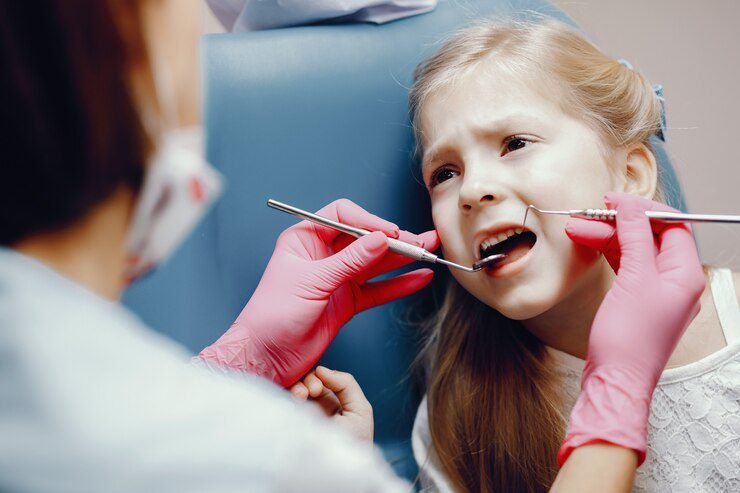
Severe damage to primary teeth can have a significant impact on a child’s oral health and overall well-being. These primary teeth, also known as baby teeth, play a crucial role in a child’s development. They aid in proper speech development, assist in chewing and eating, and serve as placeholders for permanent teeth that will eventually erupt.
When severe damage occurs to primary teeth, it can lead to various complications. The most common causes of severe damage include dental decay, trauma, and congenital anomalies. If left untreated, these conditions can result in pain, infection, difficulty in eating, and speech difficulties.
Moreover, the impact of severe damage can extend beyond the mouth. It can affect a child’s self-esteem and confidence, as appearance plays a crucial role in social interactions during childhood. Additionally, untreated severe damage to primary teeth can lead to misalignment of permanent teeth and other orthodontic issues in the future.
Therefore, it is essential to address severe damage to primary teeth promptly. Understanding the potential consequences of this damage can help parents and caregivers recognize the importance of seeking appropriate treatment and preventive measures. By doing so, they can ensure the long-term oral health and well-being of their child.
Exploring Treatment Options for Severely Damaged Primary Teeth
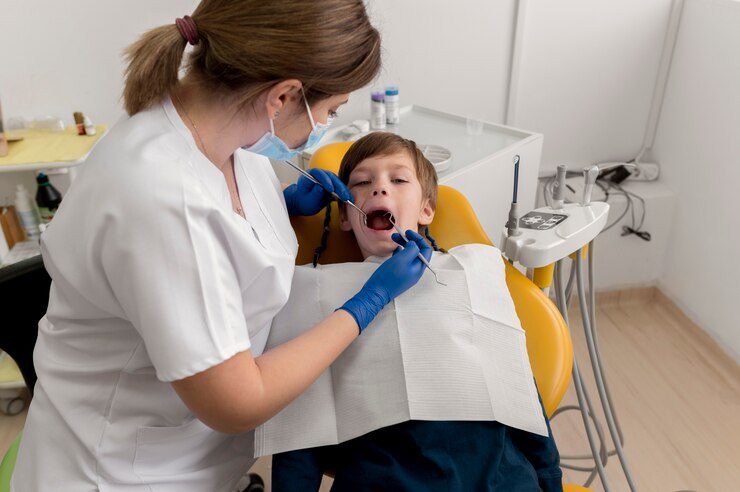
When it comes to severely damaged primary teeth, it is essential to explore treatment options that can restore function and appearance, while also prioritizing the long-term oral health of the child. The treatment approach may vary depending on the extent of the damage and the age of the child.
One common treatment option for severely damaged primary teeth is dental crowns. Dental crowns provide a protective covering for the tooth, restoring its shape, strength, and function. They are typically used when the damage to the tooth is extensive, such as in cases of deep cavities, fractures, or root canal treatments. Dental crowns can be made from various materials, including stainless steel, zirconia, or composite resin. The choice of crown material depends on factors such as the location of the damaged tooth, durability requirements, aesthetics, and the child’s dental health.
Another treatment option to consider is pulpotomy, which involves removing the infected pulp tissue while preserving the remaining healthy parts of the tooth. This procedure is often recommended for primary teeth that have extensive decay but are not severely damaged. By removing the infected pulp and applying a medicated dressing, the tooth can be saved and restored to full function. Pulpotomy is a less invasive alternative to extraction and can be an ideal treatment option for young children who are still developing their permanent teeth.
It is crucial to consult with a pediatric dentist to determine the most suitable treatment option for your child’s severely damaged primary teeth. The dentist will evaluate the extent of the damage, consider the child’s oral health history, and take into account any specific concerns or preferences. Proper assessment and diagnosis will help to ensure that the chosen treatment option provides effective restoration and promotes long-term oral health.
The Role of Dental Crowns in Restoring Function and Appearance
Dental crowns play a crucial role in restoring both the function and appearance of severely damaged primary teeth. When a tooth is extensively decayed or damaged due to trauma, it can not only cause discomfort and pain but also affect a child’s ability to bite, chew, and speak properly. Dental crowns provide a durable and effective solution to these problems, allowing children to regain their normal oral functions.
Not only do dental crowns restore the functionality of damaged primary teeth, but they also help to improve their appearance. Severely damaged teeth can be unsightly and affect a child’s self-confidence. Crowns are designed to match the shape, size, and color of the natural teeth, ensuring a seamless and natural-looking restoration. This not only enhances the aesthetic appeal of the smile but also boosts the child’s self-esteem. With dental crowns, children can smile, eat, and speak with confidence, allowing them to lead a healthy and happy life.
Below is a table outlining the role of dental crowns in restoring function and appearance:
| The Role of Dental Crowns | Description | Source |
|---|---|---|
| Restoring Tooth Structure | Dental crowns are tooth-shaped caps placed over a damaged or decayed tooth to restore its shape, size, and strength. Crowns encase the entire visible portion of the tooth above the gumline, providing protection and support to weakened or compromised teeth. | American Academy of Cosmetic Dentistry: Dental Crowns |
| Enhancing Tooth Appearance | Crowns can improve the appearance of discolored, misshapen, or severely stained teeth, enhancing their aesthetics and restoring a natural-looking smile. Dental crowns are custom-made to match the color, size, and shape of adjacent teeth, ensuring a seamless and aesthetically pleasing result. | American Academy of Cosmetic Dentistry: Dental Crowns |
| Strengthening Weak Teeth | Teeth weakened by extensive decay, large fillings, or root canal therapy may benefit from the added strength and stability provided by dental crowns. Crowns protect the underlying tooth structure, preventing further damage and reducing the risk of fracture or breakage. | American Dental Association: Dental Crowns |
| Supporting Dental Bridges | Dental crowns serve as abutments (supporting structures) for dental bridges, which replace missing teeth by anchoring artificial teeth (pontics) to adjacent natural teeth or dental implants. Crowns placed on healthy teeth adjacent to the gap provide stability and support for the bridge, restoring function and aesthetics. | American Dental Association: Dental Crowns |
| Protecting Damaged Teeth | Crowns protect teeth with cracks, fractures, or extensive damage from further deterioration by covering and sealing the affected tooth structure. By encapsulating the weakened tooth, crowns restore its integrity and prevent bacteria from infiltrating the inner layers, reducing the risk of infection and preserving oral health. | American Academy of Cosmetic Dentistry: Dental Crowns |
| Long-Term Durability | Dental crowns are durable restorations designed to withstand normal biting and chewing forces, providing long-lasting functionality and aesthetics. With proper care and maintenance, including regular dental check-ups and good oral hygiene practices, crowns can endure for many years, offering patients reliable and durable tooth restoration solutions. | American Dental Association: Dental Crowns |
How Dental Crowns Protect and Strengthen Severely Damaged Primary Teeth
Dental crowns play a crucial role in protecting and strengthening severely damaged primary teeth. When a primary tooth has suffered extensive decay, trauma, or structural damage, a dental crown can provide a durable and long-lasting solution.
One of the primary benefits of dental crowns is their ability to cover the entire visible portion of a damaged tooth, acting as a protective barrier against further deterioration. This is especially important for primary teeth, as they play a significant role in the development of speech, chewing, and proper alignment of permanent teeth. By placing a crown over a significantly damaged primary tooth, dentists can preserve its function and prevent premature loss, which could lead to misalignment or spacing issues in the future.
Moreover, dental crowns are designed to provide strength and stability to weakened primary teeth. Crowns are typically made from durable materials, such as stainless steel or zirconia, that are capable of withstanding the forces of biting and chewing. By covering and encasing the damaged tooth, a crown can reinforce its structure and prevent fractures or breakage, ensuring that the tooth remains intact and functional until it naturally falls out.
In summary, dental crowns offer significant protection and strength to severely damaged primary teeth. By providing a protective barrier and reinforcing the weakened tooth structure, crowns allow children to maintain proper oral function and avoid future dental complications.
The Different Types of Dental Crowns Available for Children
When it comes to restoring severely damaged primary teeth, there are several types of dental crowns available for children. Each type has its own unique characteristics and serves specific purposes. One common type is stainless steel crowns (SSCs), which are durable and cost-effective. These crowns are typically used for molars that require significant strength and protection. SSCs are designed to cover the entire tooth and can withstand the forces of chewing and grinding.
Another type of dental crown for children is the composite resin crown. These crowns are made from a tooth-colored material that blends in with the natural tooth. They are ideal for restoring front teeth that have been damaged or decayed. Composite resin crowns are aesthetically pleasing and can be a great option for children who are conscious about their appearance.
Porcelain fused to metal crowns (PFMs) are another option for restoring severely damaged primary teeth. These crowns are made of a metal substructure covered with a layer of tooth-colored porcelain. PFMs provide a good balance between strength and aesthetics. They are commonly used for restoring front teeth as well as back teeth.
In summary, there are different types of dental crowns available for children, including stainless steel crowns, composite resin crowns, and porcelain fused to metal crowns. The choice of crown depends on the specific needs of the child, such as the location of the tooth and the desired aesthetic outcome. Consulting with a pediatric dentist is essential to determine the most suitable crown option for your child’s dental health.
Factors to Consider When Choosing a Dental Crown for Your Child
When choosing a dental crown for your child, there are several factors to consider to ensure the best outcome for their dental health. The first factor to assess is the material of the crown. Common materials used for pediatric dental crowns include stainless steel, zirconia, and composite resin. Stainless steel crowns are durable and cost-effective, making them a popular choice for primary teeth. Zirconia crowns, on the other hand, offer excellent aesthetics and strength, making them ideal for visible teeth. Composite resin crowns provide a natural appearance and are a suitable option for children with metal allergies.
The second factor to consider is the size and fit of the crown. It is essential to choose a crown that fits well and provides proper occlusion, or bite alignment, for your child. This will ensure that their chewing and speaking abilities are not compromised. Additionally, an ill-fitting crown can lead to gum irritation and discomfort for the child. Consulting with a pediatric dentist who specializes in crowning baby teeth can help determine the appropriate size and fit for your child’s specific needs. Overall, selecting a dental crown that addresses both functional and aesthetic concerns is crucial for preserving your child’s oral health and ensuring their overall well-being.
The Process of Crown Placement for Severely Damaged Primary Teeth
To restore severely damaged primary teeth, the process of crown placement is a common and effective treatment option. This procedure involves several steps that are carefully carried out by a pediatric dentist to ensure the best possible outcome for the child’s dental health.
Firstly, the dentist will assess the damaged tooth to determine if a dental crown is the appropriate course of action. This assessment may involve a thorough examination of the tooth, including X-rays and other diagnostic tests. Once it is determined that a crown is necessary, the next step is to prepare the tooth for the crown placement.
To prepare the tooth, the dentist will remove any decayed or damaged areas and reshape it to create a proper foundation for the crown. This may involve removing a small amount of tooth structure to accommodate the crown. In some cases, if the tooth is severely damaged, a dental filling or a root canal treatment may be necessary before crown placement.
After the tooth is prepared, an impression of the tooth is taken. This impression serves as a mold for the dental laboratory to create a custom-made crown that perfectly fits the child’s tooth. While waiting for the permanent crown to be fabricated, a temporary crown will be placed to protect the tooth.
During the final visit, the temporary crown is removed, and the permanent crown is carefully fitted and cemented onto the prepared tooth. The dentist will check and adjust the fit of the crown to ensure comfort and proper bite alignment. Once the crown is securely in place, the child can resume normal eating and oral hygiene habits.
The process of crown placement for severely damaged primary teeth is a meticulous and precise procedure that requires the expertise of a pediatric dentist. By following a thorough assessment, preparation, custom fabrication, and precise placement, the dentist can restore the function and appearance of the damaged tooth, promoting optimal oral health for the child.
(Word Count: 396)
The Benefits and Risks of Crowning Baby Teeth
Crowning baby teeth, also known as dental crowns, can provide several benefits in cases of severe damage. One of the main advantages is restoring the function of the affected tooth. When a primary tooth is severely damaged, it can hinder a child’s ability to bite and chew properly, leading to difficulties in eating and potentially impacting their overall nutrition.
In addition to restoring function, dental crowns can also enhance the appearance of a severely damaged primary tooth. The crown is custom-made to match the color and shape of the surrounding teeth, providing a natural-looking result. This can help boost a child’s self-esteem and confidence, especially when the damage to the tooth is visible when they smile or speak.
However, it is important to note that there are risks associated with crowning baby teeth. One potential risk is tooth sensitivity, which may occur after the crown placement. The affected tooth may become more sensitive to temperature extremes, such as hot or cold foods. This sensitivity tends to subside over time, but it’s essential to monitor your child’s comfort and consult with a pediatric dentist if it persists.
Another risk is the potential for damage to the surrounding teeth or gums during the crown preparation process. The dentist needs to remove a small amount of tooth structure to accommodate the crown. Although great care is taken to minimize any harm, there is a small possibility of unintentional damage.
Overall, the benefits of crowning baby teeth can outweigh the risks in cases of severe damage. However, it is crucial to consult with a pediatric dentist who can assess your child’s specific situation and provide appropriate guidance. They will consider factors such as the extent of the damage, the age of the child, and the long-term implications to make an informed decision regarding the use of dental crowns for primary teeth.
Addressing Concerns About Cost and Insurance Coverage for Dental Crowns
Cost and insurance coverage are common concerns for parents when considering dental crowns for their child’s primary teeth. It is important to understand that the cost of dental crowns can vary depending on factors such as the type of crown, the complexity of the procedure, and the geographical location of the dental practice. On average, the cost of a dental crown for a child’s primary tooth can range from $500 to $1,500 per tooth.
Insurance coverage for dental crowns also varies from plan to plan. Some dental insurance plans may provide full coverage for dental crowns for children, while others may cover a percentage of the cost or have limitations on coverage. It is recommended to contact your insurance provider to understand the specifics of your plan’s coverage for dental crowns.
However, it is important to remember that the cost of dental crowns should not be the sole determining factor when considering treatment options for severely damaged primary teeth. Dental crowns are a durable and effective treatment that can help protect and strengthen damaged teeth, preventing further complications and promoting proper oral health. In the long run, investing in dental crowns for your child’s primary teeth can save you from more costly and invasive dental procedures in the future.
Understanding the importance of primary teeth and the benefits of dental crowns can help parents make informed decisions for their child’s dental health. Consulting with a pediatric dentist is crucial in determining the best treatment options and discussing any financial concerns. Furthermore, various payment options, such as dental financing plans or flexible spending accounts, may be available to help alleviate the financial burden of dental crown treatment. By prioritizing your child’s dental well-being and seeking professional guidance, you can address concerns about cost and insurance coverage while ensuring optimal dental care for your child.
Maintaining Oral Hygiene and Care for Crowned Baby Teeth
Maintaining proper oral hygiene for crowned baby teeth is crucial to ensure the longevity and health of these teeth. As a parent, it is essential to teach and guide your child in developing good oral care habits. Regular brushing of the teeth is paramount, both in the morning and before bedtime, using a soft-bristled toothbrush and a pea-sized amount of fluoride toothpaste.
In addition to regular brushing, flossing should be incorporated into the daily oral hygiene routine. Flossing helps remove plaque and food particles from between the teeth and under the dental crown. It is important to show your child the correct technique for flossing and assist them until they are able to do it properly on their own. Encouraging your child to rinse their mouth thoroughly with water after meals or snacks can also help reduce the risk of plaque buildup.
Furthermore, regular visits to the dentist are essential for monitoring the health of crowned baby teeth. Your dentist will examine the teeth and ensure that the dental crowns are in good condition. They may also recommend dental cleanings or other preventive measures to maintain oral health. Taking these steps will not only promote healthy baby teeth but also establish good oral hygiene practices that will benefit your child’s future dental health.
Potential Complications and Long-Term Outlook for Crowned Baby Teeth
The placement of dental crowns on severely damaged primary teeth can greatly improve their function and appearance. However, it is important to be aware of the potential complications that may arise and the long-term outlook for these crowned baby teeth.
One potential complication is the possibility of sensitivity or discomfort after the crown placement. This is relatively common and usually resolves within a few days or weeks. In rare cases, it may persist, indicating a need for further evaluation by a dentist. Additionally, there is a small risk of the crown becoming dislodged or loosened over time. Regular dental check-ups and proper oral hygiene can help prevent these situations from occurring.
In terms of the long-term outlook, dental crowns generally have a good prognosis for primary teeth. They provide durable protection, allowing children to eat, speak, and smile comfortably. With proper care and maintenance, crowned baby teeth can often remain functional until they naturally exfoliate. However, it is important to note that dental crowns are not intended to be permanent solutions for primary teeth, as they may need to be replaced as the child grows. Regular dental visits will ensure that the crowned teeth are monitored and managed appropriately for the best long-term outcome.
Success Stories: Real-life Cases of Crowning Baby Teeth
In the world of pediatric dentistry, success stories are not just about achieving a beautiful smile, but also about restoring the oral health and overall well-being of children. There have been numerous real-life cases where crowning baby teeth has played a crucial role in saving and preserving the primary dentition. One such case involved a child who had severely damaged primary teeth due to early childhood caries.
The child’s parents were concerned about the impact of the damaged teeth on their child’s ability to chew and speak properly. After consulting with a pediatric dentist, they decided to proceed with dental crowns as the best treatment option. The dental crowns were custom-made to fit the child’s teeth and were placed over the damaged primary teeth to restore their function and appearance.
Within a few weeks of crown placement, the child’s ability to chew and speak improved significantly. Not only did the dental crowns provide a strong and durable solution to the damaged teeth, but they also gave the child a confident and joyful smile. This success story showcases the transformative power of dental crowns in restoring both the aesthetics and functionality of severely damaged primary teeth.
Alternative Treatment Options for Severely Damaged Primary Teeth
When it comes to severely damaged primary teeth, it is important to explore alternative treatment options that can effectively restore function and appearance. While dental crowns are a common method used to address such issues, there are other approaches worth considering. One alternative treatment option for severely damaged primary teeth is direct pulp capping. This involves removing only the affected portion of the tooth and placing a special material directly on the exposed pulp to promote healing and protect against further damage. This treatment can be successful in cases where the damage is minimal and has not reached the pulp extensively. However, it is important to consult with a pediatric dentist to determine the suitability of direct pulp capping for your child’s specific situation. Another alternative treatment option is the use of dental veneers. Veneers are thin, custom-made shells that are bonded to the front surface of the teeth to improve their appearance. While they may not provide the same level of strength and protection as dental crowns, veneers can be a viable option for cases where the damage is primarily cosmetic in nature. It is important to note that not all cases of severely damaged primary teeth can be effectively treated with alternative options. Thus, it is crucial to consult with a pediatric dentist who can assess the individual circumstances and recommend the most appropriate treatment plan.
Consulting with a Pediatric Dentist: What to Expect
When scheduling a consultation with a pediatric dentist, it is important to know what to expect during the visit. The initial appointment typically begins with a comprehensive evaluation of your child’s oral health. The dentist will examine the primary teeth, jaw, and surrounding tissues to check for any signs of decay, damage, or misalignment. Additionally, they will assess your child’s bite and evaluate any potential risk factors or developmental concerns.
During this consultation, the pediatric dentist will also take the time to discuss your child’s dental history, including any prior treatments or concerns. They may inquire about your child’s oral hygiene routine and dietary habits to gain a better understanding of their overall oral health. This information allows the dentist to develop a personalized treatment plan tailored to your child’s specific needs.
In addition to the evaluation and discussion, the pediatric dentist will educate you and your child about proper oral hygiene practices, diet choices that promote good oral health, and preventative measures to protect the primary teeth. They may also provide guidance on fluoride use and answer any questions or concerns you may have. By the end of the consultation, you should have a clear understanding of your child’s current oral health status, any treatment options that may be necessary, and a plan for maintaining optimal oral health moving forward.
Conclusion: Making an Informed Decision for Your Child’s Dental Health
In conclusion, making an informed decision for your child’s dental health is of utmost importance. By understanding the impact of severe damage on primary teeth and exploring treatment options, you can ensure that your child receives the best care possible. Dental crowns play a crucial role in restoring function and appearance, as they protect and strengthen severely damaged primary teeth.
When choosing a dental crown for your child, several factors need to be considered. These include the type of dental crown available for children and the process of crown placement for severely damaged primary teeth. It is essential to address concerns about cost and insurance coverage for dental crowns, as well as to understand the maintenance and care required for crowned baby teeth.
While dental crowns have proven to be an effective treatment option, alternative options may exist for severely damaged primary teeth. Consulting with a pediatric dentist can provide valuable insights and guidance in making the best decision for your child’s dental health. By being well-informed and proactive, you can ensure the long-term oral health and well-being of your child.
How do I know if my child’s primary teeth are severely damaged?
You can look for signs such as tooth pain, discoloration, cracks, or significant decay. Consulting with a dentist is the best way to determine the severity of the damage.
What are the different types of dental crowns available for children?
The most common types of dental crowns for children are stainless steel crowns, ceramic crowns, and composite resin crowns. Each type has its own advantages and considerations.
What factors should I consider when choosing a dental crown for my child?
Factors to consider include the durability of the crown, the appearance, the cost, and any specific dental concerns or allergies your child may have.
Are dental crowns for primary teeth covered by insurance?
Coverage for dental crowns can vary depending on your insurance plan. It’s best to check with your insurance provider to understand the coverage and any associated costs.
How do I maintain oral hygiene and care for my child’s crowned baby teeth?
It is important to continue practicing good oral hygiene habits, such as regular brushing and flossing. Your dentist may also recommend additional care instructions specific to crowned teeth.
What are the potential complications and long-term outlook for crowned baby teeth?
While dental crowns generally have a high success rate, there can be complications such as tooth sensitivity or crown fracture. The long-term outlook depends on proper oral care and regular dental check-ups.
What are some alternative treatment options for severely damaged primary teeth?
Alternative treatments may include dental fillings, root canals, or tooth extraction. The appropriate treatment will depend on the individual case and should be discussed with a dentist.
What should I expect when consulting with a pediatric dentist?
During a consultation with a pediatric dentist, they will examine your child’s teeth, discuss treatment options, address any concerns, and provide recommendations based on your child’s unique dental needs.
How do dental crowns restore function and appearance of severely damaged primary teeth?
Dental crowns provide a protective covering for the damaged tooth, restoring its shape, strength, and appearance. This allows the tooth to function properly and improves its overall aesthetics.
Can you share any success stories of crowning baby teeth?
While specific success stories may vary, many parents have reported positive outcomes after their child’s primary teeth were crowned. These success stories often highlight increased comfort, improved dental health, and restored confidence in their child.



